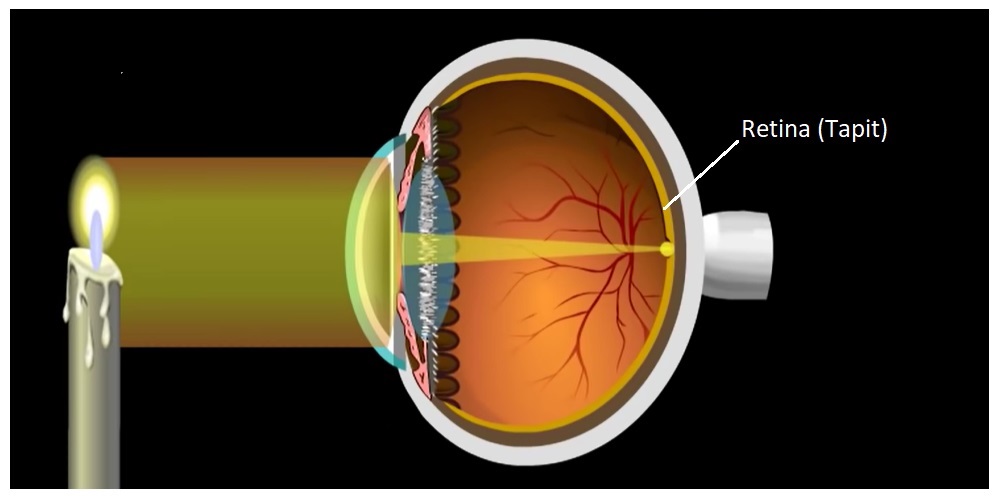Summarize
- Led light colour therapy improves mental and physical health
- Different colours stimulate the body and mind in different ways
- Blue light is calming, red increases energy and circulation
- Colour therapy can relieve stress, pain and improve mood
- A form of treatment that is safe and available at home or in therapy centres
If you are interested in body wellness, led light colour therapy is an interesting field of medicine. There may be an alternative treatment option that suits you. Led light colour therapy is an innovative way to use light to improve your mental and physical health. In this article we will look at the basics of LED colour therapy, its benefits and how it can be used.
What is colour therapy for LED lights?
Led light colour therapy uses wavelengths of light from different coloured led lights to stimulate the body and mind. Each colour has a different effect on the body, and each colour stimulates a different chakra. This helps the body’s energy flow and balance.
Led light colour therapy is a commonly used form of therapy that can be combined with other therapies or used independently. It is widely used in massage parlours, yoga studios, beauty salons and health centres.
How does the human eye see colours?
The human eye sees different coloured lights using special cells called cone and rod cells.
Dipstick cells are responsible for colour vision and come in three types: red, blue and green.
Rod cells are responsible for black and white vision and there is only one type.
When light hits an object, the object reflects some of the light back to the eye. Dipstick cells detect the colour of reflected light and send a message to the brain

Wavelength of Led lights
The different wavelengths of light are different frequencies of electromagnetic radiation. The human eye can only detect a certain range of wavelengths, called visible light.
Visible light covers the wavelength range 380-750 nm.
Different wavelengths cause different colour sensations in the eye. For example, violet light is about 400 nm and red light is about 700 nm

How does colour therapy with LED lights work?
Led light colour therapy works by stimulating the body’s energy. Different colours affect the body in different ways. For example, red light stimulates the adrenal glands, which helps to increase energy levels and improve blood circulation.
This scientific article investigated the effect of light on adrenal gene expression and glucocorticoid release. The study found that light activates adrenal gene expression via the nervous system and that this expression is associated with increased plasma and brain corticosterone levels without activation of the hypothalamic-pituitary-adrenal axis. The research suggests that light plays an important role in regulating adrenal function, and therefore the stress response and circadian rhythms.
Blue light, on the other hand, blocks the pineal gland, which is responsible for melatonin production. As the study explains, pineal gland cells are sensitive to blue light and that blue light inhibits melatonin production. This therefore interferes with the natural functioning of the melatonin and thus the natural sleep rhythm.
Led light colour therapy and its benefits
The benefits of colour therapy with Led lights are manifold. Here are some of them:
Stress reduction
Led light colour therapy helps to relax and reduce stress. Blue light, in particular, helps to calm you down and relieve anxiety. A 2017 study showed that blue light speeds up the relaxation process after stress compared to regular white light.
Another study from 2018, which reported that blue light exposure lowers systolic blood pressure and increases heart rate compared to control light. The study also showed that blue light increases blood flow and nitric oxide levels and reduces vascular resistance and pulse wave velocity. The researchers suggested that blue light could be an inexpensive and safe way to treat high blood pressure.
Pain relief
Led light colour therapy helps to relieve pain. For example, a green light can help relieve muscle pain. Here’s an article that looked at the effect of green light on pain. The article explains that green light alters serotonin levels and the endogenous opioid system, the body’s own pain-relieving system.
The red light stimulates blood flow, which helps reduce pain. This article investigated the effect of red light therapy on the circulatory system. The article explains that the energy from red light photons triggers reactions in our bodies that lead to improved circulation. This is mainly due to an increase in nitric oxide concentration. Nitric oxide is like an energy bunny for your body.
Improves mood
Led light colour therapy helps to improve mood. In particular, blue light helps boost energy levels and improves mood, according to a study on long-term light exposure.
This is a University of Helsinki PhD thesis on the link between light and mental health. The study concludes that long-term exposure to light can protect against depression and anxiety and promote emotion regulation.
In another study on the effects of light on health, an article in the medical journal Duodecim on the physiological and psychological effects of light. The article explains that light affects behaviour, sleep-wake cycles, alertness and mood, as well as the body’s internal clocks and hormone secretion.
Improves skin condition
Led light colour therapy also helps to improve the condition of the skin. In particular, red light helps to improve the condition of the skin. In a systematic review of the effect of LED lights on skin rejuvenation, the effectiveness of red LED lights in increasing cell metabolism and collagen and elastin production was evaluated and found to have a measurable effect.

How is LED light colour therapy used?
The colour therapy of Led lights can be used in many different ways. It is most commonly used in various therapy centres and massage parlours. In therapy centres, it can be combined with other forms of treatment, such as massage or acupuncture.
However, colour therapy with Led lights can also be used at home. Many people use it, for example, to relax or relieve stress, by buying bright lighting equipment. Led bright lights can be bought in many shops.
Led light colour therapy is a generally safe form of treatment. It is also non-invasive and painless, so it is suitable for most people. However, before you start using LED light colour therapy, it is always a good idea to discuss the matter with your doctor first.
Led lights for colour therapy and mental health
Led light colour therapy can also be useful in the treatment of mental health. Colour therapy is commonly used to treat depression and anxiety. For example, we have written about the use of LED lights in the treatment of SAD.
Conclusion
Led light colour therapy is an innovative way to use light to improve your mental and physical health. It can help relieve stress, reduce pain and improve your mood. It is also easy and safe to use and is a versatile form of treatment.
If you are interested in colour therapy for LED lights, you should consider using it. However, always remember to discuss this with your doctor before you start using it.
Frequently asked questions
Is colour therapy with LED lights safe?
Led light colour therapy is a generally safe form of treatment.
How is colour therapy with LED lights used?
Led light colour therapy can be used in many different ways, for example in therapy centres or at home.
Can colour therapy with LED lights help with mental health?
Yes, colour therapy with LED lights can be useful for treating depression and anxiety, for example.
Which colours are useful in colour therapy for LED lights?
Each colour has different effects on the body. For example, green light helps relieve pain and heal the skin, while blue light helps improve mood.
Can colour therapy with LED lights be used during pregnancy?
It is always a good idea to discuss this with your doctor, but in general, LED light colour therapy is a safe treatment even during pregnancy.
Other Led and Health articles:
You can find other Led and health articles in our category Led and health



